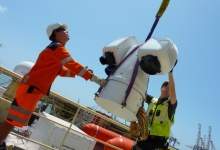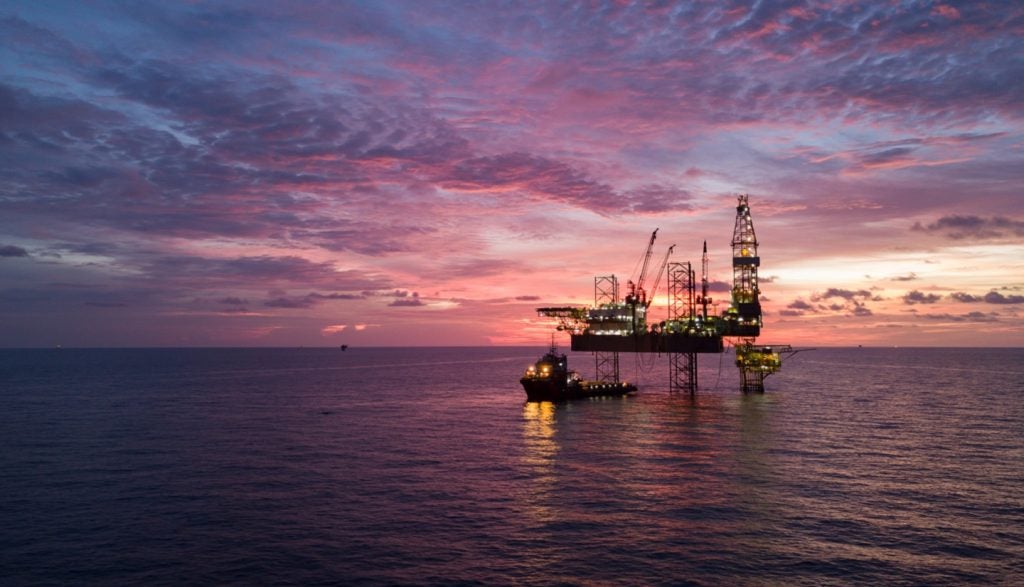

Since September Aptomar has been collaborating with industry partners Eni Norge, Statoil, Gdf Suez E&P Norge, OMV Norge and the Norwegian Coastal Administration to develop innovative solutions for better oil spill management using existing technologies and infrastructure.
Some of the projects objectives include strengthening technology functionality – such as Aptomar’s SECuras scanner so it can be remotely controlled – and developing unique communication and data sharing platforms using existing cameras and infrastructure for more informed and faster decision making.
As the project draws to a close, and Aptomar prepares to showcase the projects’ work in January 2015, co-founder of the company, Lars Solberg, shares insights into the thinking and technology behind the new solutions, as well as why they wouldn’t be possible without industry input.
Heidi Vella-Starr: How did this joint industry partnership (JIP) come about?
Lars Solberg: We [Aptomar] have been working in the oil and gas industry since 2005 and have delivered about 100 systemsto about 20 or so oil companies. Several of them mentioned a lot of improvements they wanted done on our equipment. So, in the beginning of 2013, we approached some of the oil companies to start a JIP to improve some of our products.
See Also:
HVS: One of the technologies you are optimising is the SECurus sensor…
LS: SECurus is the only sensor in the world that can measure and geo-reference relative thickness of oil; there is a rule of thumb saying that 90% of the volume of the oil in a spill is located in 10% of the visible area. Today the SECurus system is the only system that will show where the combatable portion of the oil is in that huge area that you can see with your eyes and with oil spill detection radars.
How well do you really know your competitors?
Access the most comprehensive Company Profiles on the market, powered by GlobalData. Save hours of research. Gain competitive edge.

Thank you!
Your download email will arrive shortly
Not ready to buy yet? Download a free sample
We are confident about the unique quality of our Company Profiles. However, we want you to make the most beneficial decision for your business, so we offer a free sample that you can download by submitting the below form
By GlobalDataUp until today these sensors have been locally controlled. As we go forward and we look at installation use on offshore platforms, remote locations, unmanned platform, we want to centralise the control of the remote sensing, and SECurus is one of the remote sensing sensors. So having a remote control on it means wherever you want to sit and control these cameras, wherever they are in the world, you can. The main reason you want the remote control is to do more work onshore but, also, if there is an incident it is possible to assist people offshore in remote sensing using the sensors.
HVS: Another of the projects objectives is to utilise data from offshore cameras…
LS: Yes, we want to integrate more cameras into the system via a TCMS, which stands for tactical collaboration and management system. That is an emergency response management system that collects data from offshore sensors – it might be a camera, it might be a radar, it might be a satellite – and puts everything into one common operating picture.
The more information, the better you understand the situation and the better you can make decisions. To date there are a lot of cameras that have been bought for a lot of locations, vessels and installations. They don’t require high end sensors like the SECurus sensor, they have more low cost and more low performance sensors, especially cameras. We want to integrate those cameras into the big common operating picture. The more information sources we have the better the decisions you can make. We are able to integrate up to 80% of all cameras delivered on a world wide basis to the offshore industry.
How it works is every customer has their own network with those sensors feeding their emergency response team with that information. So that camera or that radar will just be another sensor feeding into it. It’s fairly simple.
HVS: What else has the project been working on?
LS: Communication infrastructure. There is a priority when something happens and which is the onsite resources – the offshore vessel, aircraft, helicopters – they need to be able to communicate data for an efficient operation For instance, some locations, the Arctic and west coast Africa, there is limited connectivity – it is not available. So we have found off the shelf solutions to install on vessels and aircraft so that when they are on site, for instance in an oil spill clean up, they can share data between each other themselves. They are not dependent on having a third party satellite communications system or similar.
That was found and tested. We decided on one particular solution which is a low cost robust tool to pass data on site between resources. The solution is like wi-fi – antennas, routers to connect and share data.
HVS: Why did the JIP take the approach of utilising exiting technologies as opposed to developing new ones?
LS: I think oil and gas oil spill and emergency response is very conservative, it doesn’t like that new technologies are continually thrown into the market. It needs to have something new and it needs to use it and integrate it and make sure it works before going onto the next project. So this project is all about taking the existing solutions that we have already got – the SECurus camera, the radars, the satellite information and the onshore operation room, and improving it one step further.
So there are lots of new developments but they are developing on existing solutions and existing technologies. It is not revolution in terms of a complete new sensor or system; it is taking it one step further and improving efficiency and range, training etc.
HVS: What challenges has the project faced?
LS: I think the main challenges are getting access to offshore test facilities. Installing the solutions and technologies on rigs and vessels, getting access to them is a long process. We have to go through the oil company; there is a lot of process around installing something on a platform or vessel. Of course the companies in the project are very flexible and they want to contribute so they do whatever they can to make their resources available to us.
HVS: Has the collaboration aspect been important – do you see this approach happening more often in the future?
LS: Yeah, I think it is important because, first of all, you have to work on addressing real challenges and prioritise the challenges the industry are facing. So I think it is extremely important the industry players are deeply involved in defining the challenges and also defining what will be the appropriate solution for their challenge. Then you ensure that oil companies are in with both their legs, they are committed, whatever the project develops, there is a need for it in the industry. If you take engineers and just try to develop something yourself you will not be sure if whatever you develop is what the customer needs, so having these JIPs makes sure that the end customer is involved in the whole process.


.gif)


